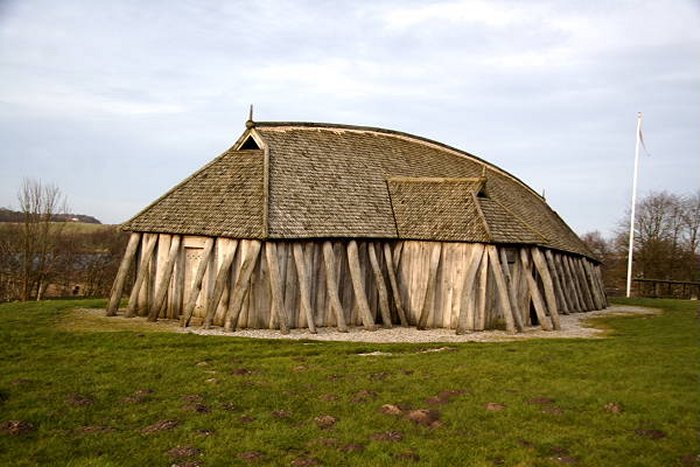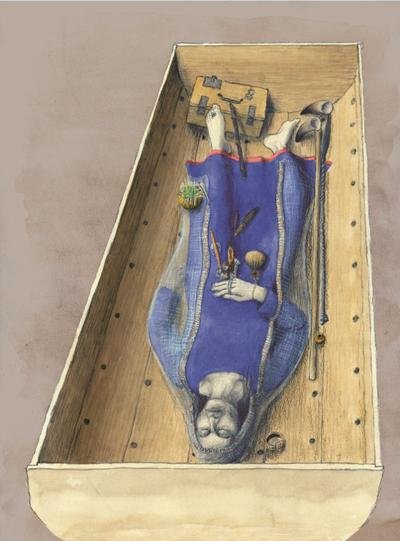Mysterious Ancient Grave With Unusual Artifacts That Belonged To A Völva – Norse Female Shamans Did Exist
Ellen Lloyd - AncientPages.com - A Völva in Norse mythology was someone everyone feared, even the gods. She was a powerful female shaman and seer, but was she only a mythological figure, or was there any proof of her existence?
Sometimes very unusual archaeological finds are made, giving us reason to ponder whether some of our ancestors’ stories are not based on actual events.
A very mysterious grave was discovered in Denmark. Several puzzling ancient artifacts were found in the tomb, indicating whoever was buried there was no ordinary person. What is especially interesting about this particular discovery is that it seems this was the resting place of a Völva.
While excavating near the Fyrkat Viking fortress, archaeologists found about 30 Viking Age graves, but one was more unusual.
A Viking-Age Woman Who Held High Status
Scientists found a woman dressed in fine blue and red clothes inside the tomb adorned with gold thread. Her clothes showed she was important and most likely held royal status. She had been given ordinary female gifts, like spindle whorls and scissors.
Reconstruction of Fyrkat Viking fortress. Image credit: Malene Thyssen - CC BY-SA 3.0
Being a rich woman, she was buried in the body of a horse-drawn carriage.
The grave contained exotic goods from foreign countries, something only rich people could afford at the time. Her toe rings were made of silver, which has not been found elsewhere in Scandinavia. Among her burial goods were two bronze bowls, which may have come from Central Asia.
Unusual Metal Wand And Poisonous Plants
It would be easy to say this was “only” a rich Viking woman, but some objects inside the grave suggest she was a Norse shaman.
The buried seeress from Fyrkat – reconstruction drawing by Thomas Hjejle Bredsdorff. Image credit: National Museum of Denmark
Scientists discovered an intriguing metal wand and seeds from the poisonous henbane plant inside her tomb.
These two particular accessories are associated with a Norse shaman because the name Völva (vǫlva) is Old Norse and means “wand carrier” or “carrier of a magic staff.” In Norse Sagas, a Völva is often described as an older woman who appears late at night. She is dressed in a dark foot-length cloak and holds a magical staff.
The metal wand in the grave had disintegrated after all those years, but experts could determine it was an iron stick with bronze fittings.
Left: A mysterious small cup, which the woman from Fyrkat also had with her in the grave. Its function is not known, but it may have been a small drinking cup. Right: Bronze cup, possibly originating from Central Asia. It had a grass cover and contained a fatty substance. Image credit: National Museum of Denmark
Inside a small purse, there were henbane seeds. During the Viking Age, such seeds were thrown by shamans into a fire because the plants were known to produce mildly hallucinogenic smoke and euphoric states.
Henbane was often used by the witches of later periods. It could be used as a “witch’s salve” to produce a psychedelic effect if the magic practitioners rubbed it into their skin.
Why was the woman buried with such plants unless she used them?
The Viking seeress’s cooking spit. The spit was already slightly bent when it was placed in the burial. Image credit: National Museum of Denmark
White lead was sometimes used as an ingredient in skin ointment in her belt buckle.
Scientists also discovered other mysterious artifacts that support the theory the woman inside the Fyrkat grave was a Völva.
At her feet was a box containing various items, such as owl pellets and small bird and mammal bones. Apart from these was a silver amulet shaped like a magic chair.
A so-called box brooch from Gotland was found in the grave. The völva re-used the hollow brooch as a container for “white lead.” White lead is a white dye that has been used in medicine for more than 2000 years - in skin ointments, for example. It is poisonous in its concentrated form. Image credit: National Museum of Denmark
We may never know the woman’s identity, but her burial goods show she was not a Viking warrior but a Völva. A Völva was a very respected woman, and warriors often visited her before going into battle. Her Poisonous plants could have been used before an important fight to give Viking warriors strength and courage.
It is, without a doubt, a fascinating archaeological discovery that gives a unique glimpse into our ancestor’s beliefs and shows some Norse myths were undoubtedly based on actual events and people.
Written by Ellen Lloyd – AncientPages.com
Updated on April 1, 2023
Copyright © AncientPages.com All rights reserved. This material may not be published, broadcast, rewritten or redistributed in whole or part without the express written permission of AncientPages.com
More From Ancient Pages
-
!["That most enduring of romantic images, Aristotle tutoring the future conqueror Alexander".[147] Illustration by Charles Laplante [fr], 1866](https://www.ancientpages.com/wp-content/uploads/2017/06/aristotleraslexanderlyceum-307x150.jpg) Aristotle: First Book Collector Who Assembled The First Great Library Of Antiquity
Featured Stories | Jun 23, 2017
Aristotle: First Book Collector Who Assembled The First Great Library Of Antiquity
Featured Stories | Jun 23, 2017 -
 Heyoka – Sacred Clown Who By Doing The Opposite Helps And Guides In Daily Life
Native American Mythology | Feb 7, 2019
Heyoka – Sacred Clown Who By Doing The Opposite Helps And Guides In Daily Life
Native American Mythology | Feb 7, 2019 -
 Erik The Red: Famous Viking Outlaw Who Colonized Greenland And Was Father Of Leif Erikson
Vikings | Jun 16, 2020
Erik The Red: Famous Viking Outlaw Who Colonized Greenland And Was Father Of Leif Erikson
Vikings | Jun 16, 2020 -
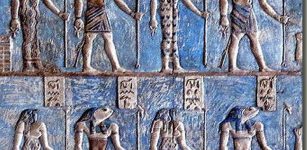 Number Eight Powerful Symbol In Ancient Traditions Of Many Cultures
Ancient Symbols | Dec 8, 2017
Number Eight Powerful Symbol In Ancient Traditions Of Many Cultures
Ancient Symbols | Dec 8, 2017 -
 Sacred Helgafell Mountain And The Story Of Torolv Mostrarskjegg
Myths & Legends | Mar 13, 2024
Sacred Helgafell Mountain And The Story Of Torolv Mostrarskjegg
Myths & Legends | Mar 13, 2024 -
 Burials Of An Unknown Race Of Unusually Small Humanoids Found In Ohio May Confirm Native American Legend
Featured Stories | Aug 18, 2024
Burials Of An Unknown Race Of Unusually Small Humanoids Found In Ohio May Confirm Native American Legend
Featured Stories | Aug 18, 2024 -
 Troublesome Ancient History Of Forks That Were Long A Shocking Sensation
Featured Stories | Nov 20, 2023
Troublesome Ancient History Of Forks That Were Long A Shocking Sensation
Featured Stories | Nov 20, 2023 -
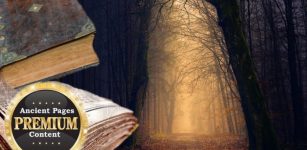 They Spoke The Language Of The Gods – Secret Symbols, Unknown Books And Manuscripts – Part 2
Ancient Mysteries | May 23, 2018
They Spoke The Language Of The Gods – Secret Symbols, Unknown Books And Manuscripts – Part 2
Ancient Mysteries | May 23, 2018 -
 How The Hyksos Invasion Of Ancient Egypt Changed History
Civilizations | Oct 26, 2016
How The Hyksos Invasion Of Ancient Egypt Changed History
Civilizations | Oct 26, 2016 -
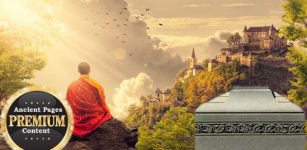 Controversial Unexplained Ancient Mystery In Mongolia – Horrifying Sight – Part 2
Ancient Mysteries | May 2, 2018
Controversial Unexplained Ancient Mystery In Mongolia – Horrifying Sight – Part 2
Ancient Mysteries | May 2, 2018 -
 Incredible Ancient Metallurgical Wonders That Defy Explanation And Pose A Real Mystery Even Today
Civilizations | Apr 21, 2014
Incredible Ancient Metallurgical Wonders That Defy Explanation And Pose A Real Mystery Even Today
Civilizations | Apr 21, 2014 -
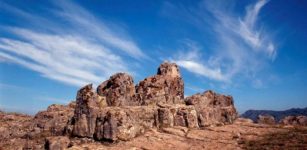 4,000-Year-Old Lunar Calendar Developed At Kokino Megalithic Observatory – Evidence Of Remarkable Astronomical Knowledge
Archaeoastronomy | Jan 9, 2021
4,000-Year-Old Lunar Calendar Developed At Kokino Megalithic Observatory – Evidence Of Remarkable Astronomical Knowledge
Archaeoastronomy | Jan 9, 2021 -
 The Word Freelancer Originates From Medieval Mercenary Knights
Ancient History Facts | Feb 25, 2016
The Word Freelancer Originates From Medieval Mercenary Knights
Ancient History Facts | Feb 25, 2016 -
 Fenrir: Oldest Of Three Monstrous Children Of God Loki In Norse Mythology
Featured Stories | Mar 28, 2018
Fenrir: Oldest Of Three Monstrous Children Of God Loki In Norse Mythology
Featured Stories | Mar 28, 2018 -
 Ancient Ziggurat Of Aqar Quf Dedicated To God Enlil
Civilizations | May 3, 2019
Ancient Ziggurat Of Aqar Quf Dedicated To God Enlil
Civilizations | May 3, 2019 -
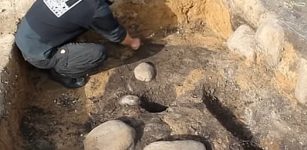 1,000-Year-Old Tomb Of Famous Viking Warrior, Ulv Galiciefarer May Have Been Unearthed
Archaeology | Jan 19, 2017
1,000-Year-Old Tomb Of Famous Viking Warrior, Ulv Galiciefarer May Have Been Unearthed
Archaeology | Jan 19, 2017 -
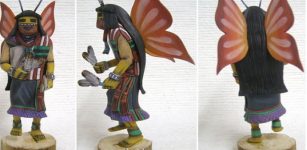 Butterfly: Powerful Ancient Symbol Of Beauty, Transformation, Hope, Rebirth And Happiness Featured In Myths And Legends
Ancient Symbols | Sep 26, 2019
Butterfly: Powerful Ancient Symbol Of Beauty, Transformation, Hope, Rebirth And Happiness Featured In Myths And Legends
Ancient Symbols | Sep 26, 2019 -
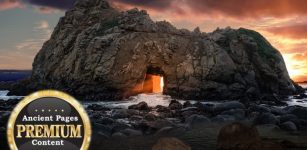 Unexplained Mystery Of The Untraceable Stone-Throwers – Strangeness In Australia And New Zealand – Part 2
Featured Stories | Nov 13, 2019
Unexplained Mystery Of The Untraceable Stone-Throwers – Strangeness In Australia And New Zealand – Part 2
Featured Stories | Nov 13, 2019 -
 Gengen Wer – Goose God Who Guarded The Celestial Egg Containing The Life Force In Egyptian Beliefs
Featured Stories | Apr 22, 2021
Gengen Wer – Goose God Who Guarded The Celestial Egg Containing The Life Force In Egyptian Beliefs
Featured Stories | Apr 22, 2021 -
 Could Vancouver Island’s Hepburn Stone Be 15,000 Years Old?
Artifacts | Feb 20, 2021
Could Vancouver Island’s Hepburn Stone Be 15,000 Years Old?
Artifacts | Feb 20, 2021


